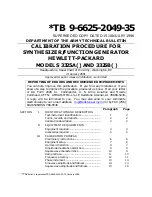
Detailed Settings – [FUNCTION]
P-140
Owner’s Manual
ENGLISH
40
You can select various scales.
Equal Temperament is the most common con-
temporary piano tuning scale. However, his-
tory has known numerous other scales, many
of which serve as the basis for certain genres of
music. You can experience these tunings with
the P-140.
F2.1: Scale
Setting range:
1: Equal Temperament
2: Pure Major
3: Pure Minor
4: Pythagorean
5: Mean Tone
6: Werckmeister
7: Kirnberger
Default setting:
1: Equal Temperament
EQUAL TEMPERAMENT
The pitch range of each octave is divided equally into
twelve parts, with each half-step evenly spaced in pitch.
This is the most commonly used tuning in music today.
PURE MAJOR/PURE MINOR
These tunings preserve the pure mathematical intervals of
each scale, especially for triad chords (root, third, fifth).
You can hear this best in actual vocal harmonies - such as
choirs and a cappella singing.
PYTHAGOREAN
This scale was devised by the famous Greek philosopher
and is created from a series of perfect fifths, which are col-
lapsed into a single octave.
The 3rd in this tuning are slightly unstable, but the 4th and
5th are beautiful and suitable for some leads.
MEAN-TONE
This scale was created as an improvement on the
Pythagorean scale, by making the major third interval more
“in tune.” It was especially popular from the 16th century
to the 18th century. Handel, among others, used this scale.
WERCKMEISTER/KIRNBERGER
This composite scale combines the Werckmeister and Kirn-
berger systems, which were themselves improvements on
the mean-tone and Pythagorean scales. The main feature of
this scale is that each key has its own unique character. The
scale was used extensively during the time of Bach and
Beethoven, and even now it is often used when performing
period music on the harpsichord.
F2.2: Base Note
If you select a scale other than Equal Temperament, you
need to specify the root. (You can also specify the root
note with Equal Temperament selected, but it will have
no effect. The base note setting is effective for tunings
other than the Equal Temperament tuning.)
Setting range:
C, C
#
, D, E
b
, E, F, F
#
, G, A
b
, A, B
b
, B
Default setting:
C
• Root indication example
F2. Selecting a Scale
(F
#
)
(G)
(A
b
)
Followed by
a high bar if sharp
Followed by
a low bar if flat















































